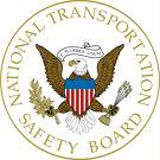
The NTSB says air traffic controllers who vectored a Southwest Boeing 737 to a close-quarters intercept of a NORDO Cirrus in Florida last March invoked a section of the FAA orders (PDF) that compels them to take extraordinary action if the situation warrants. The intercept made headlines and there were at least short-term consequences for the controllers and pilots involved. But a factual report issued by the NTSB last week suggests the controllers and supervisors on duty at the Central Florida TRACON may have believed they were duty-bound to get the passenger-laden 737 within a few hundred feet of the Cirrus, which hadn’t been heard from in 90 minutes despite repeated attempts at contact, to assess its potential threat. “The controllers at Central Florida TRACON considered the Cirrus to be an emergency due to the length of time the airplane was NORDO and considered the Cirrus a potential threat to the Disney World complex and the NASA space center, where a space shuttle was on a launch pad at the Kennedy Space Center,” the report says. “The controllers cited FAA Order 7110.65, paragraph 2-1-1, ATC Service that tasks ATC in part, to provide support for National Security and Homeland Defense.” They’d also done it before, according to the report.
As we reported in April, the operations manager at the TRACON set up a separate scope and discrete frequency to run the intercept. The Southwest crew flew the last part visually and reported they could see a silhouette in the cockpit. The 737 paced the Cirrus only briefly before being vectored away to a normal landing at Orlando. Meanwhile, on board the Cirrus, the pilot told investigators he’d been trying raise ATC for more than an hour when he finally got hold of Jacksonville ARTCC. Just as he was dialing in the new frequency, the airliner pulled into view and “was pretty close.” Once radio contact was re-established, the Cirrus was vectored to a normal landing at its destination of Kissimmee.


































